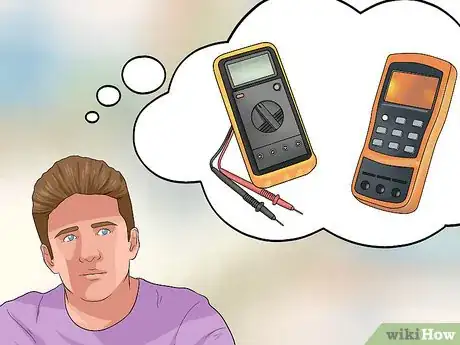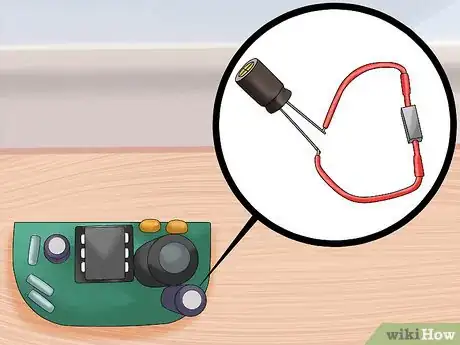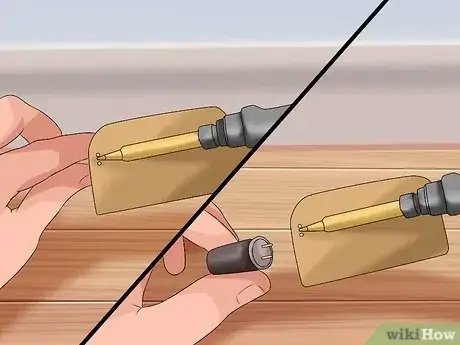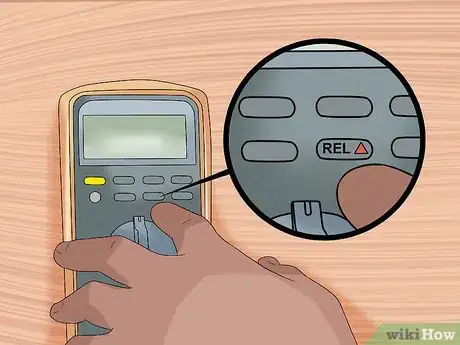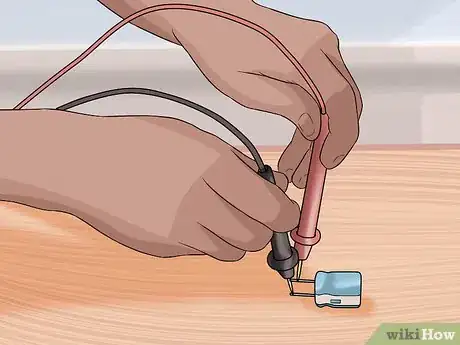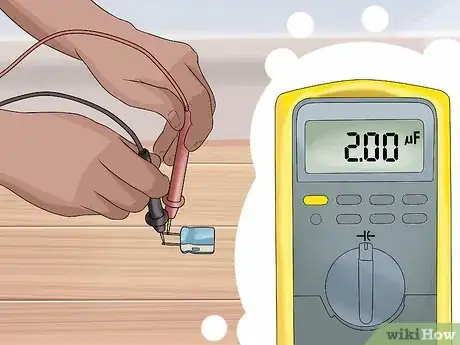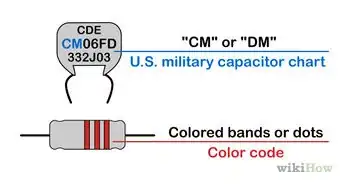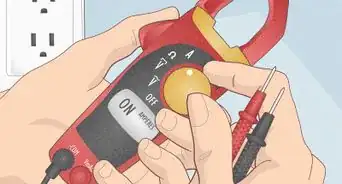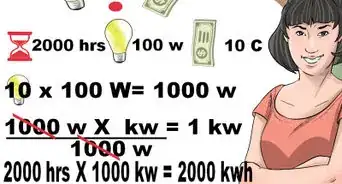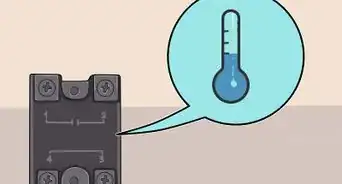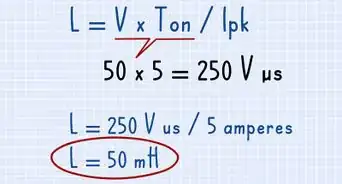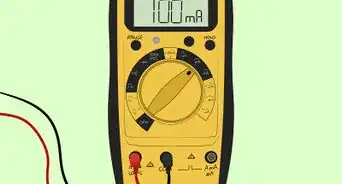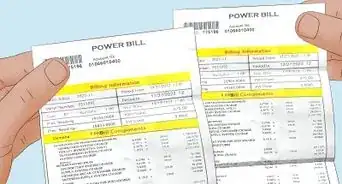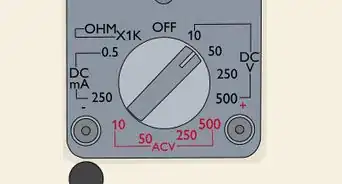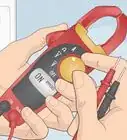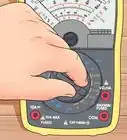This article was co-authored by Ralph Childers. Ralph Childers is a master electrician based in the Portland, Oregon area with over 30 years of conducting and teaching electrical work. Ralph received his B.S. in Electrical Engineering from the University of Louisiana at Lafayette and holds an Oregon Journeyman Electrical License as well as electrician licenses in Louisiana and Texas.
There are 7 references cited in this article, which can be found at the bottom of the page.
This article has been viewed 328,391 times.
Capacitance is the measure of how much electrical energy is stored in an object, such as a capacitor used in an electronic circuit. The unit for measuring capacitance is the farad (F), defined as 1 coulomb (C) of electric charge per volt (V) of potential difference. In practice, the farad is such a large unit that capacitance is usually measured in smaller units such as the microfarad, 1 millionth of a farad; or the nanofarad, 1 billionth of a farad. While accurate measurement requires expensive tools, you can get a rough idea from a digital multimeter.
Steps
Disconnecting the Power and Capacitator
-
1Choose a tool that will measure capacitance. Even cheap digital multimeters often have a capacitance setting "–|(–." These are good enough for basic troubleshooting, but are not typically accurate enough to rely on precise measurements. They do give accurate results for most film capacitors, since these behave more like the ideal capacitors your multimeter's calculations assume.[1] If accuracy and precision are important, consider an LCR meter. These tools can cost several thousand US dollars, but have several reliable ways to test capacitance.
- This guide focuses on multimeters. LCR meters should come with a detailed instruction manual specific to your device.
- ESR meters (equivalent series resistance meters) can conduct tests on capacitors while they are in a circuit, but do not measure capacitance directly.
-
2Shut off the power to the circuit. Confirm that the power is off by setting your meter to test for voltage. Place the leads on opposite sides of the circuit's power source. If the power was successfully shut off, the voltage should read zero.Advertisement
-
3Discharge the capacitor carefully. A capacitor can hold charge for several minutes after the power is disconnected, or even longer in rare cases. Connect a resistor across the capacitor terminals so the charge can drain safely. Make sure the resistor is up to the task:[2]
- For small capacitors, use (at least) a 2,000Ω resistor rated for 5 watts.
- Large capacitors found in appliance power supplies, camera flash circuits, and large motors can hold a dangerous or lethal amount of charge. Experienced supervision is recommended. Use a 20,000Ω, 5 watt resistor attached via 12 gauge wire rated for 600 volts.
-
4Disconnect the capacitor. Testing while the capacitor is part of a circuit can give very inaccurate results, and potentially damage other components. Remove the capacitor carefully, desoldering the connection if necessary.
Taking the Measurement
-
1Set the multimeter to measure capacitance. Most digital multimeters use a symbol similar to –|(– to signify capacitance. Move the dial to that symbol. If several symbols share that spot on the dial, you may need to press a button to cycle between them until the capacitance symbol appears on the screen.[3]
- If your tool has several capacitor settings, choose the range that fits your best guess for the capacitor's correct value. (You can read the capacitor's label to get a rough idea). If there is only one capacitor setting, your multimeter can automatically detect the range.
-
2Activate REL mode if present. If your multimeter has a REL button, press it while the test leads are separated. This will zero out the capacitance of the test leads themselves, to avoid interfering with the measurement.[4]
- This is only necessary if measuring small capacitors.
- On some models, this mode disables auto-ranging.
-
3Connect the leads to the capacitor's terminals. Note that electrolytic capacitors (most commonly shaped like cans) are polarized, so identify the positive and negative terminals before you connect the multimeter's leads. This may not matter much for your test, but you'll certainly need to know this before using the capacitor in a circuit.[5] Look for any of the following:[6]
- A + or - next to a terminal.
- If one pin is longer than the other, the long pin is the positive terminal.
- A colored stripe next to a terminal is an unreliable marker, since different types of capacitor use different standards.[7]
-
4Wait for the result. The multimeter will send out a current to charge the capacitor, measure the voltage, then use the voltage to calculate the capacitance. This process can take several seconds, and the buttons and display screen may be slow to respond until it's finished.
- An "OL" or "overload" reading means the capacitance is too high for the multimeter to measure. Set the multimeter to a higher range if possible. This result can also mean the capacitor has shorted.
- An auto-ranging multimeter will test the lowest range first, then increase if it hits an overload. You may see "OL" appear on the screen multiple times before you see the final result.
Warnings
- Do not handle or supply power to capacitors with visible leaks or bulges. They may spark or explode.⧼thumbs_response⧽
References
- ↑ http://www.planetanalog.com/document.asp?doc_id=527457
- ↑ https://www.ifixit.com/Guide/Constructing+a+Capacitor+Discharge+Tool/2177
- ↑ http://en-us.fluke.com/training/training-library/test-tools/digital-multimeters/how-to-measure-capacitance-with-a-digital-multimeter.html
- ↑ http://en-us.fluke.com/training/training-library/test-tools/digital-multimeters/how-to-measure-capacitance-with-a-digital-multimeter.html
- ↑ http://www.learningaboutelectronics.com/Articles/How-to-test-a-capacitor
- ↑ https://learn.sparkfun.com/tutorials/polarity
- ↑ https://www.electronics-tutorials.ws/capacitor/cap_5.html/comment-page-7
- ↑ https://www.electronics-tutorials.ws/capacitor/cap_3.html
About This Article
To measure capacitance, you'll need a digital multimeter, which you can pick up at your local hardware store. First, turn off the power to the capacitor, and connect a resistor across the terminals to drain the charge. Then, disconnect the capacitor, set the multimeter to measure capacitance, and press the REL button if your multimeter has one. Next, connect the multimeter's positive and negative leads to the terminals on the capacitor. Finally, wait for the results to appear on the screen of the multimeter. For tips on how to choose the right multimeter for the capacitor you're measuring, read on!
